Tassie filmmaker’s doco A Plastic Ocean highlights a global emergency
Filmmaker Craig Leeson’s potent documentary about the devastation caused by plastic pollution has helped launch worldwide impetus for change, from company boardrooms to family dinner tables
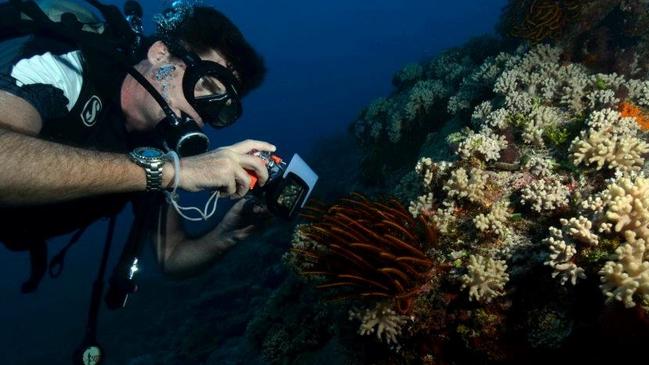
Lifestyle
Don't miss out on the headlines from Lifestyle. Followed categories will be added to My News.
We can learn many things from the coronavirus pandemic as it sweeps the globe.
When the dust settles, we, as a species, will have many difficult questions to answer about the way we responded, indictments upon our self-centredness as people ignored social distancing pleas, and the way it crushed public health systems that had been under-resourced for years.
But for Tasmanian journalist and documentary filmmaker Craig Leeson, the biggest lesson to learn from it was the way it exposed the clear correlation between human industry and pollution.
When worldwide lockdowns stopped industry, pollution stopped, too. Beijing suddenly had blue sky. People in northern India could see the Himalayas on the horizon for the first time in a generation.
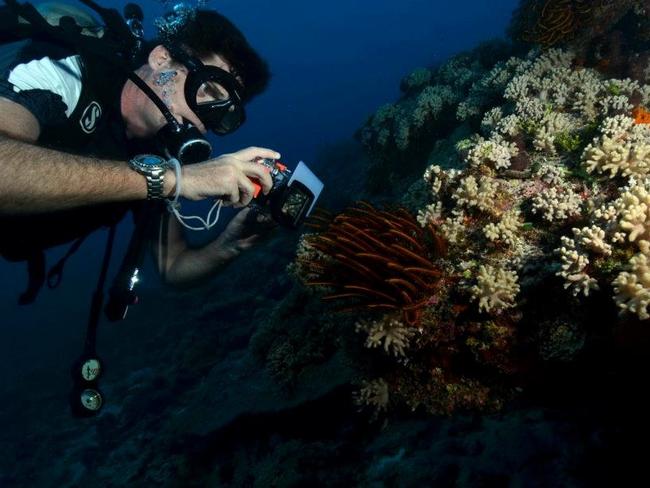
“In early March, NASA released satellite pictures showing pollution over China, comparing levels in January and February,” Leeson says. “And you can see very clearly that the enormous levels of pollution over China almost completely disappeared during that time.
“Since the appearance of COVID-19, the Chinese government stopped the factories, cancelled flights, people were not allowed to go to work or travel, and the amount of carbon pumped into the atmosphere decreased dramatically.”
Leeson says that when the crisis is finally over, we will need to take an urgent look at our other priorities for protecting the human race. And the current pandemic has showed us that we are capable of making big changes when they are needed, if we are motivated enough to do so.
“Every year seven million people die as a direct result of pollution, and for most people it’s not even on our radar,” Leeson says.
“Pollution and climate change are things that we do have some control over, yet we pump this crap into the air, our kids are asthmatic before they are eight, we’re polluting water sources, pumping chemicals from plastics into kids’ bodies before they’re even born, disrupting their endocrine systems, but what are we doing about all of that?”
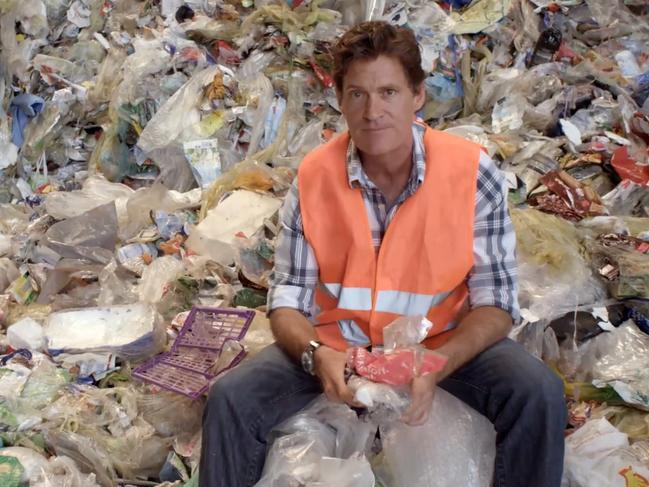
Leeson is doing plenty about it.
Originally from Burnie on the North-West Coast, Leeson started out as a reporter with the Advocate before moving into broadcast journalism, working as an overseas correspondent for the Seven Network and Al Jazeera. Later he started directing and producing documentary content for the National Geographic Channel, and in 2017 released his first feature-length documentary, A Plastic Ocean.
This film project initially started life as a documentary about the blue whale, an animal Leeson had been fascinated with since childhood.
But while filming whales in the water in the ocean far offshore, the camera crew noticed how foul the water was. It was oily on the surface and cloudy beneath with a haze of tiny particles drifting through the water like dust motes.

The haze was caused by clouds of microplastics, the sand-size particles of plastic that remain as bigger pieces of plastic degrade. And the oil was a combination of the other substances absorbed and carried by the plastic as it broke down.
And all of this was happening in the middle of the ocean, nowhere near land and human populations.
Leeson was so appalled by the discovery of the toxic pollution in what should have been a pristine environment that the direction of his documentary changed entirely. It became a search for the origins of this plastic, the story of why it was made, how it was disposed of and what caused it to end up in the ocean as a poisonous cloud.
What he discovered was simultaneously shocking and self-evident, a confirmation of what most of us probably already know about our consumerism, but also the revelation that the damage we are causing is far more insidious than we realise.
A
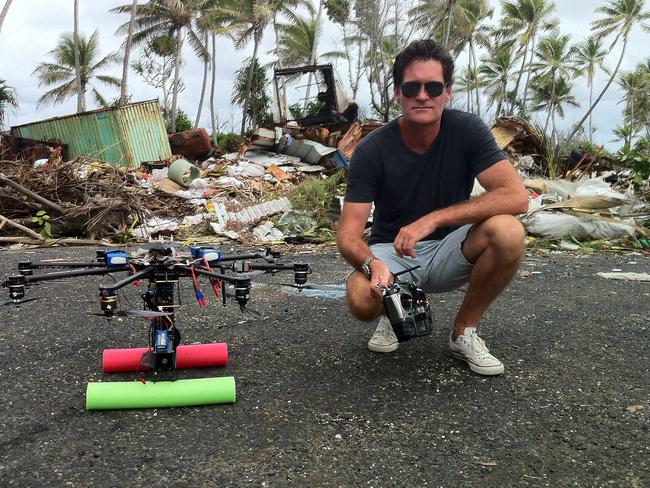
Plastic Ocean has been shown around the world and is now available on Netflix, helping it to reach an even bigger global audience, and this uncomfortably enlightening film is changing the lives not only of the ordinary people who watch it, but also at the highest levels of some of the world’s biggest companies.
“I get five to 10 emails a day from people around the world saying it completely changed their life, they quit their job, started their own zero-waste business, did a complete audit of the plastic in their house, you name it,” Leeson says.
The problem is simply this: plastic does not go away. Ever.
So many plastic items are described as being disposable, because plastic is so cheap to produce. But how do you dispose of something that never actually goes away? No matter where we throw it or bury it, the best we can do is move it from one place to another, or perhaps change its shape, but it still exists.
“Plastic is the most durable substance ever made — every single piece of plastic that has ever been made — if it hasn't been incinerated, is still here somewhere in some form. The Earth is turning into a rubbish bin that is overfilling and spilling over the sides,” Leeson says.
A Plastic Ocean takes us to visit ocean gyres, home to those mythical “islands of trash” we hear about on social media from time to time. Of course, there is not really a giant floating island of plastic in the middle of the Pacific Ocean. But the reality is something much worse: loosely dispersed expanses of deteriorated plastic, creating clouds of microplastics beneath the surface and bigger pieces that eventually sink to the sea floor.

The microplastics are ingested by tiny animals in the water, or even swallowed with mouthfuls of krill by baleen whales. Bigger pieces are mistaken for food by bigger fish or birds. And one way or another, all this plastic finds its way into food chains.
Including ours.
Recycling might seem like the obvious solution but, as we saw in Australia recently, even this is not the magic bullet many thought it was.
“As soon as China and Indonesia started banning the import of plastic waste from other countries, what we saw was Australia's so-called recycling companies collapse and go bankrupt,” Leeson says.
“They weren’t recycling companies, they were shipping companies, shipping this stuff overseas to be processed because there isn’t actually the infrastructure here to process it at home. So as soon as we couldn’t send it away, there was nowhere else for it to go but landfill. All our household recycling efforts became pointless.”
And he warns Australians to be on the lookout for a phenomenon known as “greenwashing”, when a company or organisation creates the illusion of doing something sustainable when it really is not.
“In Hong Kong there are recycling bins all over the city but the garbage truck comes past and empties the recycling into the same truck as the rubbish and it all goes into landfill,” Leeson says.
“People think they’re doing the right thing by putting things in the recyclable bin, but it makes no difference.
“And even with ‘good’ plastics like PET that can be recycled quite easily, they can only be recycled so many times, about 10 times, before they just become garbage. At some point we still need to find a way to put them back into the environment.”
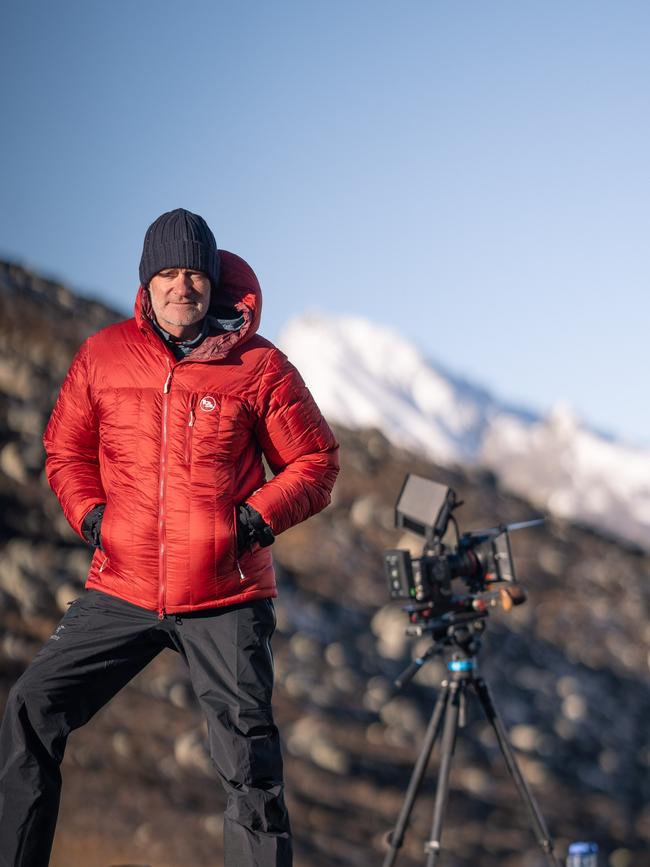
Leeson says he took great care to do no finger-pointing in his film. He prefers to let the footage — with visible branding on the rubbish — speak for itself.
He believes responsibility for much of the world’s plastic waste lies directly with the companies that produce and sell it, convincing people it is “disposable” or recyclable when in reality it is neither. The only solution to the problem, he says, is banning single-use plastics altogether, and drastically reducing all other plastics.
Rather than backing big corporations into a corner about the issue and having them go on the defensive and make excuses, he prefers to try to get them onside. And A Plastic Ocean seems to have an uncanny power for doing this.
“I get parents coming up to me at events and talks around the world saying their kids watched the film, came home and said ‘mum, why are you wrapping my sandwiches in plastic? That causes problems in the environment.’
“Kids have had a profound effect, they’re instrumental in spreading this message because parents don’t want to be villains to their kids, they want to be heroes. When kids bring these issues up with their parents, those conversations lead to families making big changes.
“I moderated a panel in Singapore once with senior figures from some big companies who wanted to find out more about how they could make a difference. One of them was the vice-president of Exxon Chemicals, who produce a lot of the world’s single-use plastics.
“He told me his kids watched my film and came up to him and asked him why he worked for a company that did all this damage to the environment, and he didn’t have an answer. He thought about it and couldn’t reconcile it, so he decided to try and do something about it.”
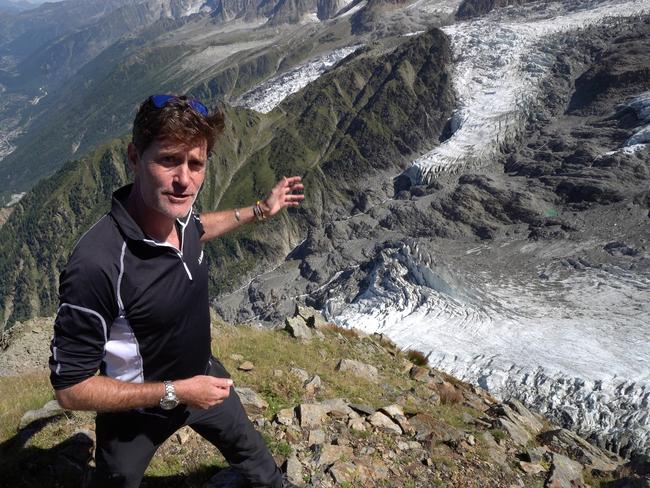
We can all mount personal campaigns of activism as well. When Leeson advocates for making plastic waste the producers’ problem instead of ours, he really means it. He particularly enjoys a movement called “Trash the Checkout”.
“We’ve all seen things like pointless plastic wrapping on things like bananas and coconuts in supermarkets, even though they come with the most incredible natural packaging on the planet,” he says.
“They just use it so they can get their branding on the item, and as soon as you get it home the first thing you do is take the plastic off and then you need to get rid of it.
“So I take the plastic wrapping off stuff in the supermarket and, as I get to the checkout, I leave it there. I ask to speak to the manager, they take it for me and I say ‘please dispose of it properly, please stop wrapping this stuff in plastic’. And if enough of us do that, it sends a signal to supermarkets that we simply won’t tolerate it.”
Ultimately, the message of A Plastic Ocean is a hopeful one, with Leeson using its simple, accessible message as a rallying call for ordinary people to start reducing their consumption of single-use plastics, pressuring their local supermarkets to reduce plastic on their shelves, and myriad other simple ways of doing their bit.
Leonardo DiCaprio, a keen supporter of environmental causes, came on board as an executive producer for A Plastic Ocean to help raise its profile, and Leeson even scored an interview with his lifelong hero Sir David Attenborough for the film.
“I rarely get nervous to the point where I find it difficult to speak but speaking to Sir David for the first time, I was nervous,” he says.
“I’ve followed his films and books since I was six. And this was the first issues-based film he has ever been involved with. Normally he prefers to bring attention to these threats through showing the beauty of the natural world, so it was quite significant.”
Leeson has created an organisation, Plastic Oceans, to help produce other environmental documentaries and to spread the message about reducing pollution. Leeson’s job title is “Global Chief Evangelist” a title both grandiose and tongue-in-cheek, reflecting the importance of the message but also its accessibility.
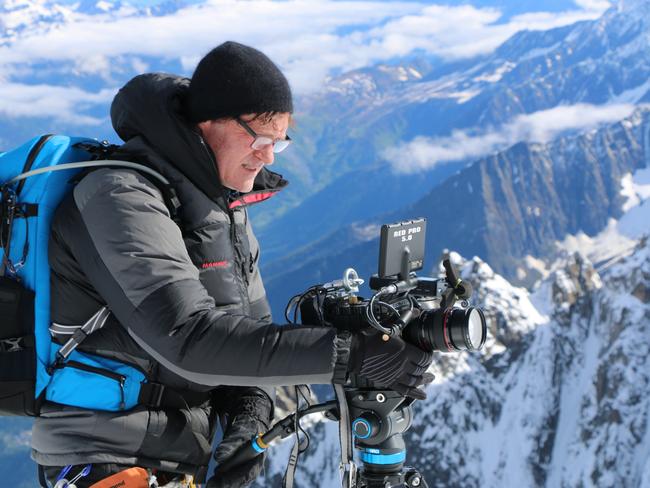
He is now in post-production for another feature documentary, The Last Glaciers, about glaciers and how vital they are to the entire planet’s life cycle. Not only do they provide water for entire countries and reflect sunlight back into space to keep global temperatures down, but they are also disappearing. And while they take thousands of years to form, they are likely to be gone within a couple of generations, causing untold climate upheaval.
But he is still hopeful there is time for people to see what they need to do to stop this catastrophe, and to get it done.
He knows this is possible because he has seen exactly this kind of massive paradigm shift in his own lifetime, in his hometown of Burnie.
As a young surf lifesaver in Burnie, he noticed that sometimes he would step out of the water with his eyes red and stinging, a phenomenon that turned out to be a side effect of cancer-causing dioxins being dumped into the water by the heavy industries in the city, like the APPM pulp mill at Emu Bay.
As a young fourth-generation journalist at the Advocate, where his dad Allan was a senior journalist, Leeson took on the pulp mill pollution story and it became his first big environmental fight.
Now those big industries are gone and Burnie is a very different place. The water is clean again.
“Burnie turned itself around from this heavily polluted industrial city with the highest rate of cancer in the world, to becoming Australia's tidiest town,” he says.
“And pre-coronavirus the city had about 30 cruise ships a year coming in to see that coastal region. Penguin colonies have re-established, the water is blue again, the fish have returned, and now it is a tourist city.
“It’s a great example of what can happen if you protect your resources. It can regenerate.”
And he still has a great love for Tasmania. His parents still live in Burnie and he owns a home in South Hobart, although he regrets being unable to get back there as often as he would like. His production company is in Hong Kong, so he is based there, but even then he spends most of his time travelling for filming or on news assignments.

He still takes assignments from time to time “to keep my hand in”, but says documentary filmmaking is his passion.
“I never wanted to be a journalist, I wanted to be a vet, then I wanted to be a park ranger and then, because of the success I had as a champion surf boat rower, was offered the job to row competitively for a Queensland surf club.
“I went to my dad and said I’ve been offered this dream job to train and compete professionally, but Dad in all his wisdom said ‘that’s great but what happens when you turn 30 and your knees blow out and you don’t have a profession behind you’?
“It all made sense and, nepotism being what it is, he said there's a position vacant at the Advocate as a copy messenger. I started doing that, later discovered I was quite competent at writing and enjoyed it, and it all started from there.
“I went into broadcast journalism and eventually started working as foreign correspondent in Asia. It was fun and incredible to be at the forefront of some of those major stories of their time, but I realised you make these stories that are a minute and a half long, after running around for two or three days in extremely difficult conditions, it goes to air and then is never seen again.
“I’ve found that documentaries fulfil me a lot more. I can spend time doing fantastic research, really get to the nub of a problem, and then present it and it's around forever. A Plastic Ocean has been seen by tens of millions of people since January 2017 and it’s still as relevant today as it was then.” •
A Plastic Ocean is available to stream on Netflix.
The Last Glaciers is expected to be released in November.


